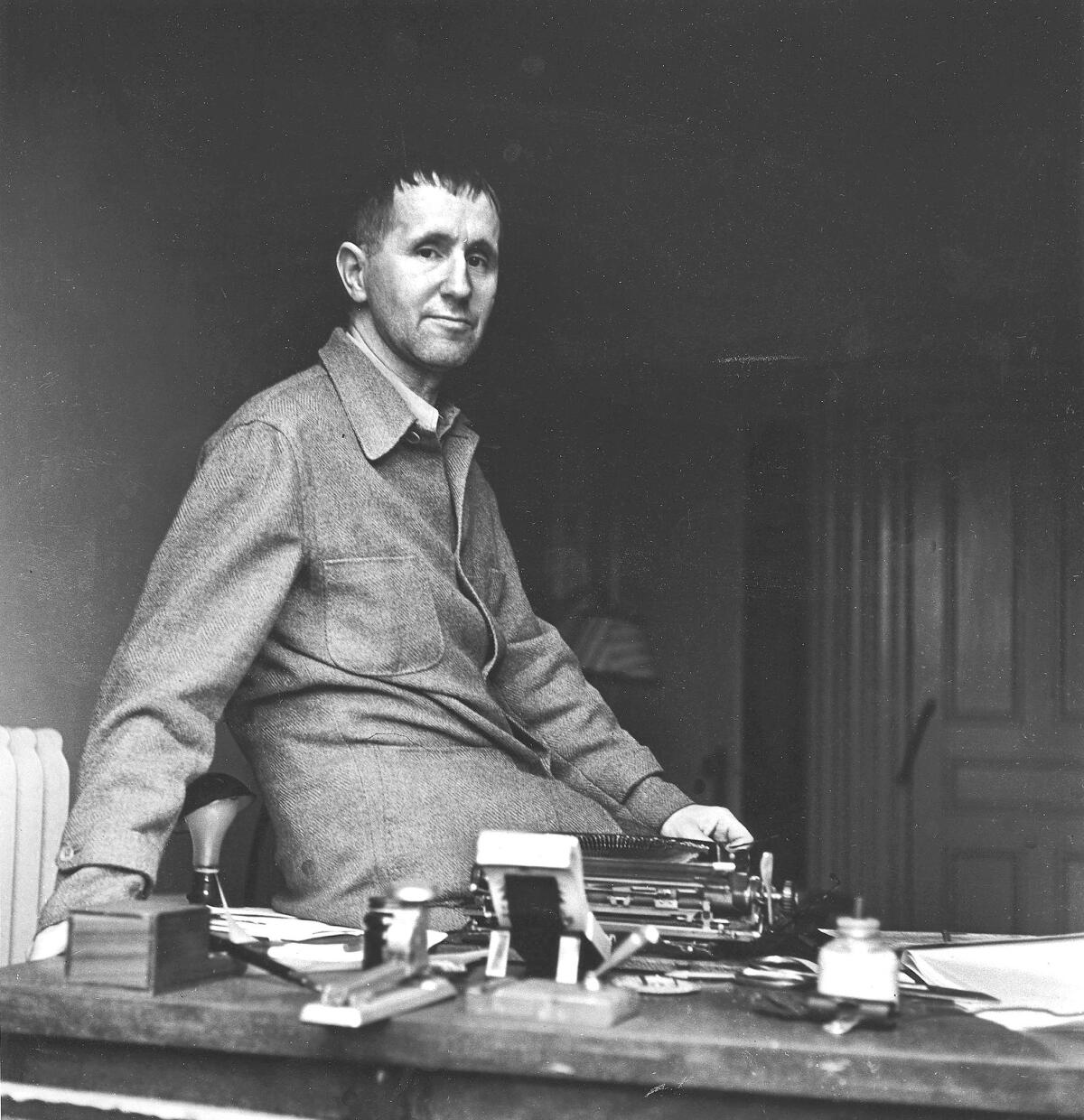Review: âThe Partnershipâ looks anew at Brechtâs creative circle

The German playwright and poet Bertolt Brecht (1898-1956) inspired extremes of loyalty and antipathy. Brilliant, charismatic and seductive, he was professionally unreliable and personally deceptive. He broke hearts at will and took credit for work not his own. The charisma arguably enabled all the rest.
Just how exploitative Brecht was, as a man and an artist, remains an unsettled question. John Fuegiâs controversial 1994 book âBrecht & Co.: Sex, Politics, and the Making of the Modern Dramaâ portrayed the playwright as cruel, misogynistic and hypocritical â even psychopathic. Fuegi attributed much of Brechtâs dramatic production to talented, infatuated and eventually disillusioned or discarded lovers.
In âThe Partnership: Brecht, Weill, Three Women, and Germany on the Brink,â Pamela Katz, a screenwriter and novelist, adopts a less strident view â of both the authorship imbroglio and Brechtâs admittedly complicated love life. Her account is readable, engaging and fair-minded, perhaps to a fault. It is also occasionally romanticized and repetitive.
Katz focuses on the creative alliance between Brecht and the avant-garde composer Kurt Weill (1900-50), both looking to challenge established aesthetic forms and a society they found economically unjust and morally bankrupt. Their greatest legacy remains âThe Threepenny Opera,â a 1928 musical play that both critiqued and enraptured Weimar Germany. The work owed a debt (how great is debatable) to Brecht collaborator Elisabeth Hauptmann, along with assorted poets and John Gayâs 18th century original, âThe Beggarâs Opera.â Together, Brecht and Weill (and Hauptmann) also produced a song cycle and a full-scale opera about the corrupt, sinful town of Mahagonny, the satirical musical play âHappy Endâ and a ballet with songs titled âThe Seven Deadly Sins.â
Plenty of women populate Katzâs narrative â these were sexually licentious times, and even the mostly loyal Weill strayed, taking up with the wife of his set designer. The eponymous three, however, are actress Lotte Lenya, Weillâs wife and the most celebrated interpreter of his songs; Brechtâs (second) wife, actress Helene Weigel, who managed the Berliner Ensemble, dedicated to Brechtâs plays, after his death; and Hauptmann, Brechtâs indispensable writing partner and intermittent lover.
Their stories unfold against the backdrop of Weimar Germanyâs political and artistic turbulence and the threat posed by Hitlerâs appointment as chancellor in 1933. With the Nazis in power, Weill, who was Jewish, and Brecht, a Marxist with a Jewish wife, fled Germany. (Hauptmann, also endangered by her politics, stayed behind long enough to salvage Brechtâs possessions.)
The book opens with the first encounter between Brecht and Weill, on March 24, 1927, in a Berlin restaurant. Weill, a radio reviewer, already had praised one of Brechtâs plays and was looking for works to set to music. At first, Katz suggests, âTheir quick understanding was akin to the mutual admiration that arises between skilled athletes.â Later, she writes, âit was not only the magnetic pull of each otherâs gifts, nor the ferocity of their mutual goals, pushing Brecht and Weill together; it was the opposition from the outside world.â
Brecht and Weill never became friends, Katz writes, but for a while they had an unmatched chemistry. It peaked, she says, on a French Mediterranean beach, Le Lavandou, where they hashed out the revolutionary innovations of âThe Threepenny Opera.â
Fuegi suggested that Hauptmann actually wrote roughly 80% of âThe Threepenny Opera.â But Katz argues that âthe notion of âtrue authorshipâ is far from simple,â given Hauptmannâs deeply symbiotic relationship with Brecht. While âHauptmannâs intelligent presence behind the typewriterâ was essential, she writes, âBrecht was undoubtedly in command of the creative process.â
Katz looks more kindly too on Brechtâs compulsive philandering and the lies it necessitated, seeing divided affections and weakness rather than cruelty.
By all accounts, Brecht was belligerent and bossy when mounting his plays, and the âThreepennyâ rehearsals were famously contentious. The relationship between Weill and Brecht â the latter of whom managed to wangle the lionâs share of âThreepennyâ royalties â only deteriorated from there.
The men ultimately had divergent artistic and political goals: Weill sought to make opera a popular art form, Katz says, while Brecht wanted his plays to precipitate political change. But, she notes, âHowever significant these differences were, they paled beside their personal dislike for each other.â
Trying to apportion blame equally, Katz writes that âno creative space was big enough for two such large egos.â But it is worth noting â as this book does â that Weill, after settling in America and breaking with Brecht, would enjoy successful collaborations with the most distinguished playwrights and lyricists on Broadway.
The strength of âThe Partnershipâ resides in how vividly it re-creates not just these remarkable men but also the women who contributed so mightily to their reputations. Weigelâs dignity, Hauptmannâs disappointment and abiding loyalty, and Lenyaâs wildness and talent are haunting â and they add a rich undercurrent of meaning to the bookâs title.
Klein is a cultural reporter and critic in Philadelphia and a contributing editor at Columbia Journalism Review.
The Partnership
Brecht, Weill, Three Women, and Germany on the Brink
Pamela Katz
Nan A. Talese/Doubleday: 480 pp., $30
More to Read
Sign up for our Book Club newsletter
Get the latest news, events and more from the Los Angeles Times Book Club, and help us get L.A. reading and talking.
You may occasionally receive promotional content from the Los Angeles Times.






